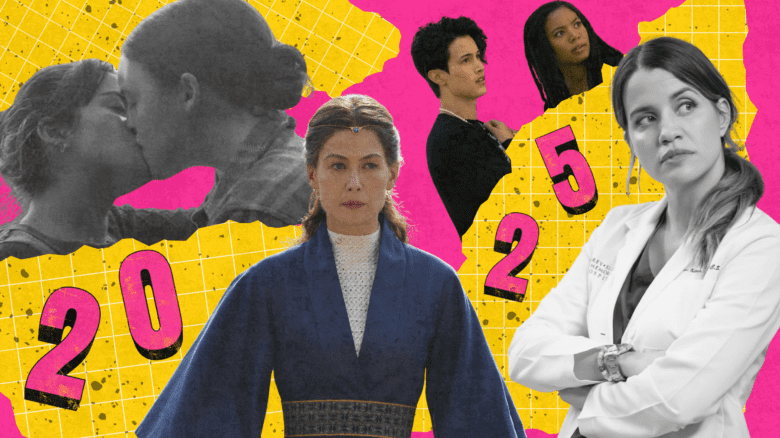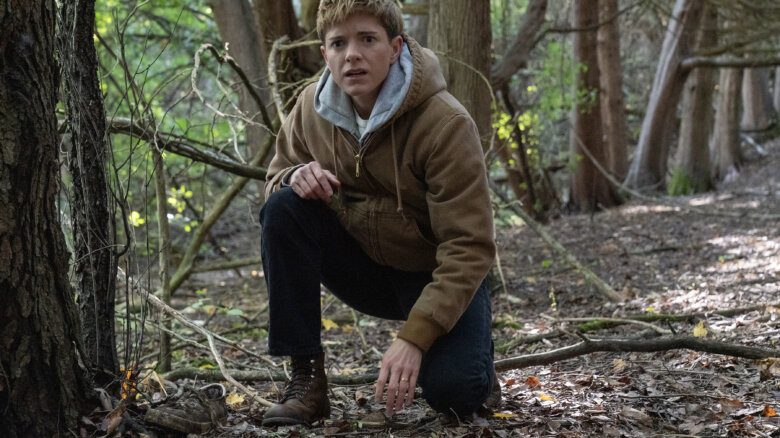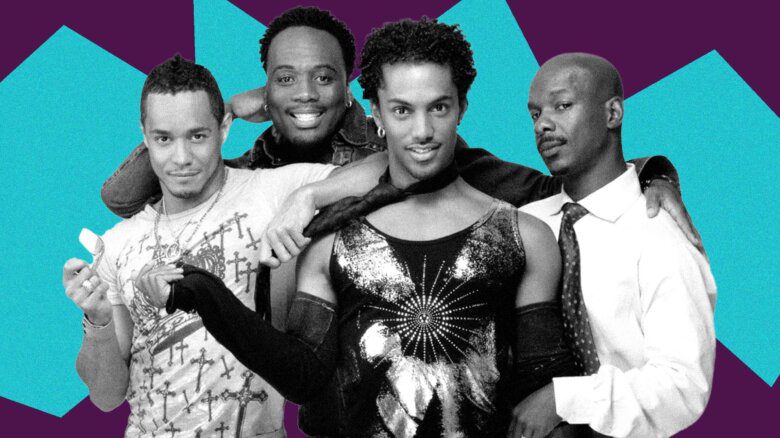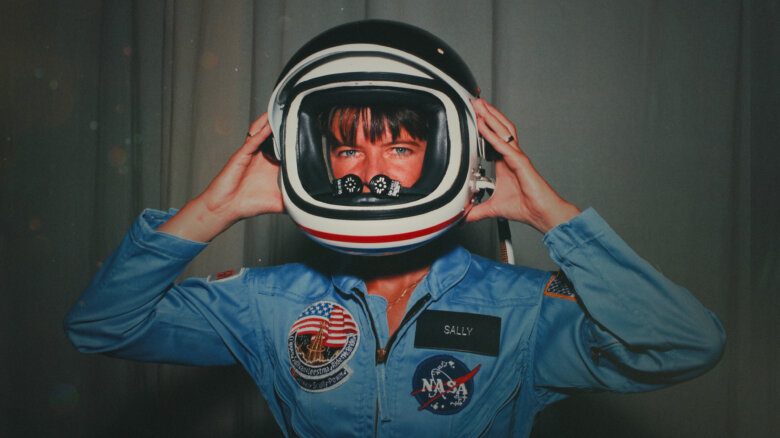There’s a scene from the Patty Jenkins-directed Wonder Woman that I haven’t been able to get out of my mind since its 2017 premiere.
It’s shortly after Diana (Gal Gadot), Amazon princess of the man-free Themyscira, meets her first man, First World War pilot Steve Trevor (Chris Pine). Gripped by the story he tells of a terrible war beyond the island’s protected shores, Diana ignores the admonitions of her fellow Amazons and leaves Themyscira with Steve, vowing to defend “mankind” from the war god Ares. Alone together as their boat rocks gently on the night-dark sea, their conversation turns inevitably and awkwardly to sex. Diana earnestly informs Steve she knows all about it despite her isolated upbringing. “I’ve read all 12 volumes of Clio’s treatises on bodily pleasure,” she explains, then cautions, “You would not enjoy them…. They came to the conclusion that men are essential for procreation but, when it comes pleasure, unnecessary.”
I still can’t shake the unspoken implications of Diana’s revelation. Questions, for me, abound: Has she only ever read about sex? That’d be a remarkable admission for an 800-year-old demi-goddess. Is she indirectly acknowledging that she’s engaged in “pleasures of the flesh” with her fellow Amazons? Or were any dalliances Diana had with women so inconsequential that, compared to her epic romance with the first man she meets, they don’t warrant mentioning?
The frustrating ambiguity of this maritime conversation foreshadows the refusal of the film and its sequel, last year’s Wonder Woman 1984, to acknowledge any possibility of queer sexuality or romance. And yet, despite their focus on heterosexual romance, both films rely heavily on Diana’s queerness in other ways: Her ethereal foreignness, her affinity for everything feminine and beautiful and her liberty from patriarchal influence.
It’s not the mere lack of same-sex romance in the Wonder Woman films or in other recent standalone superheroine origin stories that gives me pause. Rather, I take issue with films that emphasize those aspects of a character’s queerness that are easy for a mainstream media market to swallow while discounting or downplaying the potential for actual queer relationships. This happens in particular with white superheroines, whose platonic or familial affinity for women and their outsider status allow them to become stand-ins for marginalized others.
As the first standalone feature dedicated to the heroine, Wonder Woman shouldered a significant burden of representation. While the character has, of course, existed in comic form and starred in numerous television adaptations and video games since her inception 80 years ago, for her big screen origin story, Diana needed to stand out from the men who came before her—particularly from the rest of the Justice League, whom she would join on screen in other films. She also needed to come across as a universal archetype, a recognizable hero with a patina of feminine difference who could still stand in as a neutral playing field for viewer fantasies and hopes.
The film and television industry has long played off the unconscious biases of its viewers, feeding into the wrong-headed notion that straight white men are the norm. It’s why there was still handwringing just a few years ago about whether a female lead can carry a big budget movie, and one of the reasons Marvel took 23 films to produce its first, Captain Marvel, led by a woman. Concern over whether male viewers will identify with female characters (or whether straight viewers will identify with queer characters or white viewers with characters of colour) has a long history, something we’re conditioned to accept from children’s books and beyond. So it’s no wonder big blockbuster superhero films often shy away from taking what’s deemed as risks with their iconic heroes, particularly those meant to stand for universalized American values like freedom and truth.
Gadot’s Diana is white, cis and conventionally attractive (more like devastatingly beautiful, according to virtually every character she encounters). Framing her, then, as an outsider—so she can ultimately overcome adversity and step into her power as a hero—represents a challenge. What better way to accomplish such a goal than to queer her character, to have her stand out as a woman who does not fit into a “man’s world”?
Diana reads as queer according to the word’s historical usage, which is defined by a certain degree of eccentricity or ambiguity, someone out of place or time. The reclamation of “queer” by the LGBTQ2S+ community celebrates the marginalization of the word’s origins by centering it, marking difference with joy, affirmation and intention. Symbolic queerness, like Diana’s and other recent big-screen superheroines, exploits the former historical definition without following through on the promises of queer affirmation.
“Barbara and Diana’s first meeting reads as a romcom meet-cute.”
We see this even more starkly in the sequel, Wonder Woman 1984, which takes place 60 years after the events of the previous film that culminated in Steve’s heroic death. WW84 brings us a Diana who is emotionally isolated and performing hero work in secret. Maybe that’s why she still seems so otherworldly, foregoing both romance and friendship despite decades living among humans.
Enter Barbara Minerva (Kristen Wiig), a new employee at the Smithsonian, where Diana works with antiquities. Their immediate affinity for each other again emphasizes Diana’s difference from those around her, who barely notice Barbara exists. Barbara and Diana’s first meeting reads as a romcom meet-cute—a flustered Barbara spilling the contents of her briefcase and an attentive Diana kneeling to help her pick things up. The two even go to dinner, where Diana admits she hasn’t had such a fun evening in a long time and Barbara nervously expresses disbelief that Diana doesn’t have a line of friends and suitors around the block.
And yet, a romance is not to be. While the cast of Wonder Woman has spoken in interviews about the importance of the heroine for queer viewers, and Gadot acknowledged that “the sexual tension is always there” between Diana and Barbara, director Jenkins shut down the possibility of a same-sex romance—or of any queer subtext. The film’s “whole story was about Steve,” Jenkins clarified. “It’s all a love story with Steve. There wasn’t room for two [love stories] for Diana.”
Diana and Barbara aren’t given a chance to develop a friendship, either. In no time, both women make wishes on a seemingly innocuous ancient stone. Diana wishes for her lost love. Barbara wishes to be more like Diana: “strong, sexy, cool, special,” she specifies in a reverential whisper. Both wishes result in men disrupting their lives: Barbara’s puts her in the crosshairs of the smarmy antagonist Maxwell Lord (Pedro Pascal), while Diana’s brings Steve back from the dead.
Instead of pursuing clues about the mysterious stone, Diana indulges in a series of frivolous distractions with Steve. Meanwhile, she loses sight of the mounting threat from Lord and Barbara’s rapid deterioration into the power-hungry villain Cheetah. Even once Diana and Steve regain focus on the mission at hand, WW84 lingers rapturously over their romance. When she’s with Steve, Diana suddenly no longer acts like an outsider, and she’s almost willing to give up her powers to keep him in her life.
In this way, not only does WW84 refuse the promise of Diana’s seeming queerness, its insistent heterosexuality disrupts the narrative logic of her story. In the comics, Wonder Woman frequently advises women not to allow themselves to be controlled by their relationships with men. In the films, she is routinely cut off from other women (first her fellow Amazons, later Barbara), a stranger in the world of men who can only feel at home with one man in particular.
Diana isn’t the only superheroine who suffers the contradictory fate of being coded as queer, yet denied queer affirmation. Captain Marvel, directed by Anna Boden and Ryan Fleck, shares Wonder Woman’s status as a first: It’s Marvel’s first standalone movie centering a woman. In it, super-powered protagonist Carol Danvers (Brie Larson) bucks gender norms and expectations all while her origin story refuses a queer reading.
An amnesiac, Carol initially believes she’s a Kree, an alien race of self-proclaimed “noble warrior heroes” who end up as the film’s villains. Even among her ostensible Kree kin, Carol is an outsider, constantly told to curtail her emotions and other impulses. When she finds herself back on Earth with no memory of being human, Carol still reads as out of place with her cocky attitude and “Starforce” uniform.
Racially, Carol also stands out. Often surrounded by Kree (many of whom are blue-skinned), green-skinned Skrulls or by Black, human companions—including S.H.I.E.L.D. Agent Fury (Samuel L. Jackson), Carol’s former best friend and fellow Air Force pilot Maria (Lashana Lynch) and Maria’s daughter Monica (Akira Akbar)—Carol’s whiteness ironically makes her seem like a racial minority in the film.
“Yet again, the film’s directors deny the possibilities for queer subtext.”
While emphasizing Carol’s otherness from multiple angles, Captain Marvel also takes great pains to highlight the significance of Maria and Monica to Carol’s rediscovery of her humanity. Reunited with Carol, Maria vehemently asserts how heartbroken she was by Carol’s disappearance six years prior. When the two women embrace at dusk near Maria’s New Orleans home, the setting is downright romantic: Crickets singing away the day, bucolic rustling fields of grass, pink-tinged sky.
But yet again, the film’s directors deny the possibilities for queer subtext, insisting Carol’s journey is one of “self-discovery” and friendship. Compared to the mess of Steve’s return in WW84, Captain Marvel’s lack of a romance may be a blessing in disguise. But it does little to ease the sense that any appearance of queerness is merely symbolic, and that white, ostensibly straight superwomen will continue to be the norm and the ideal.
Of course, there are other significant women in contemporary superhero franchises—many of whom are women of colour, and a few of whom are queer. DC has a few LGBTQ2S+ heroes, particularly in its Arrowverse television shows, although the caped crusader of the CW’s Batwoman series is the only openly queer superheroine headlining her own show. This season, a major cast change means Batwoman is now also Black (played by Javicia Leslie), which is certainly a huge step in the right direction for inclusive representation. However, superhero television shows also operate very differently from blockbuster films, from budget to audience, which makes them difficult to compare (and probably the subject of a whole other article).
If we’re sticking to film, one could make a case for characters like Harley Quinn (Margot Robbie) and Renee Montoya (Rosie Perez) from 2020’s Birds of Prey, whose former relationships with women are at least referenced openly in the movie. But these references are relatively minor and neither character is a standalone hero; in fact, villains like Harley and disaffected cop characters like Renee have always been allowed more fluid sexuality in media (so much so that the “evil bisexual” is an oft-discussed trope).
Despite Marvel’s preponderance of movies and television shows, queer characters seem to remain especially elusive in its titles—not to mention queer characters of colour. Take, for example, a film like 2018’s Black Panther, which includes four remarkable women: Queen Ramonda (Angela Bassett); her tech-genius daughter, Shuri (Letitia Wright); the loyal spy Nakia (Lupita Nyong’o); and Okoye (Danai Gurira), general of Wakanda’s all-female royal guard, the Dora Milaje. Instead of taking the opportunity offered by this diverse slate of characters to extend the film’s inclusivity beyond race and gender, a scene that would have hinted at a flirtation between Okoye and another member of the Dora Milaje, Ayo (Florence Kasumba), who is queer in the comics, was deleted from the film.
And so it goes that even the most seemingly benign or oblique references end up on the cutting room floor—if they’re considered at all. A similar fate has befallen MCU’s Valkyrie so far, even though the character was outed as bisexual several years ago by out actress Tessa Thompson. A scene in 2017’s Thor: Ragnarok that would have confirmed her sexuality was also deleted, although the powers that be at Marvel have since promised Valkyrie a same-sex romance in upcoming films. I guess we’ll see.
As someone who watches film and TV for a living, I’m often baffled by the significant oversights of many blockbusters when it comes to race and sexuality, even as things improve incrementally in terms of gender representation. Even more so, I’m vexed by the missed opportunities for small but consequential changes that would go a long way towards queer visibility and affirmation on the big screen.
Diana recalling her first kiss with a fellow Amazon or having some intentional romantic tension with Barbara isn’t going to curtail people’s fascination with a feminist icon who’s been part of the cultural imagination for eight decades; adding moments like these wouldn’t even have to interfere with her love story with Steve. Carol getting to have a queer love interest—or perhaps, just a suggestion, being allowed to flirt with Valkyrie—isn’t going to ruin the MCU franchise.
If Marvel and DC want their films to be inclusive, they need to do more than offer us blockbusters centered around straight white women who are symbolically marginalized while deliberately cutting off all avenues of queer embodiment. True inclusivity means following through. It’s 2021 and the screen is big enough for all of us.
This story was published with support from Critical MInded.
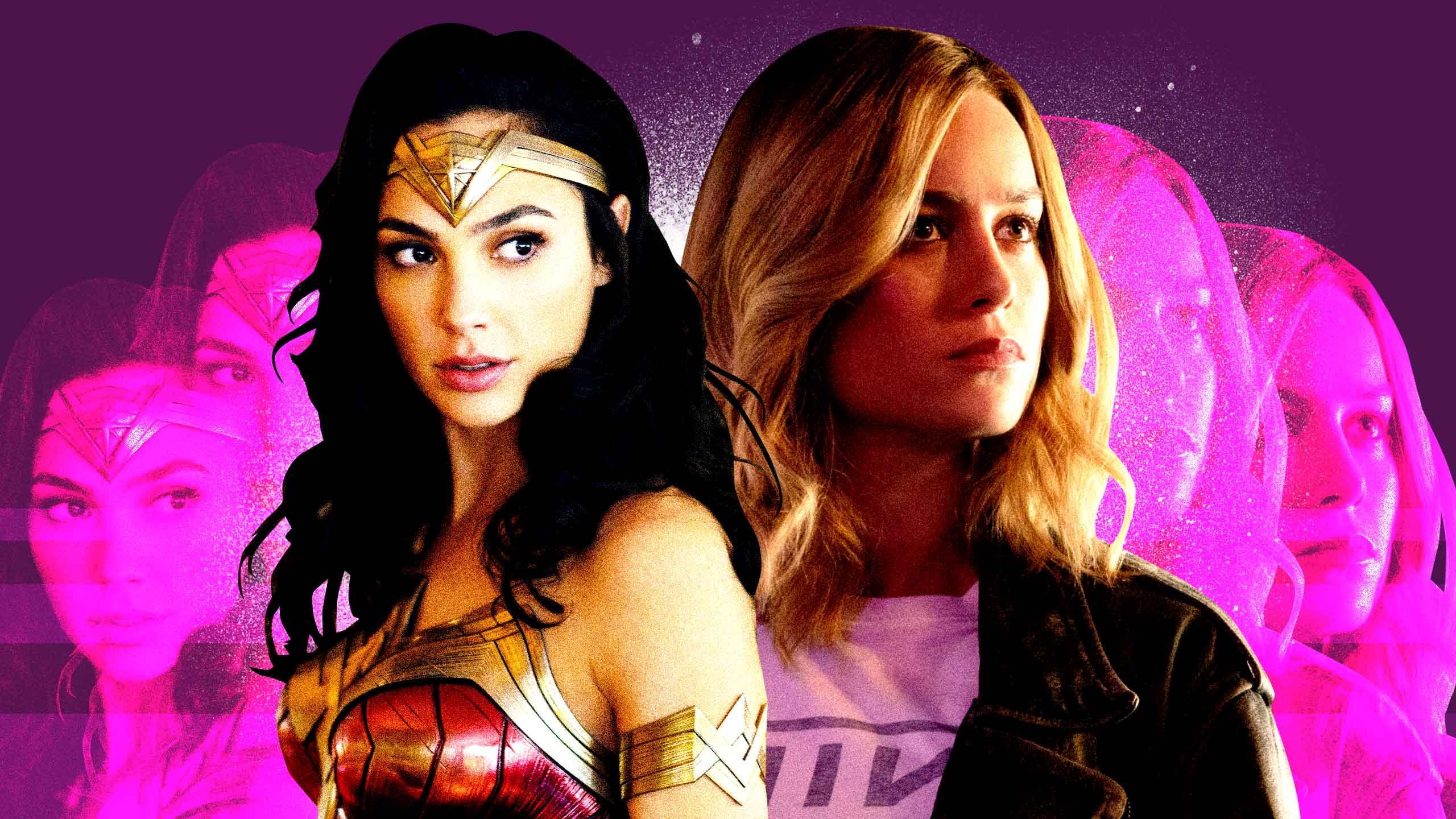

 Why you can trust Xtra
Why you can trust Xtra